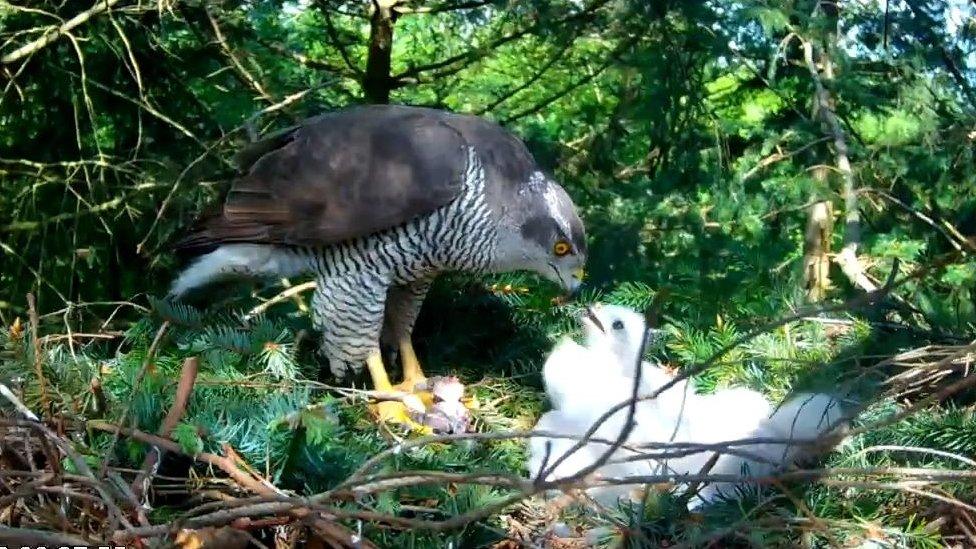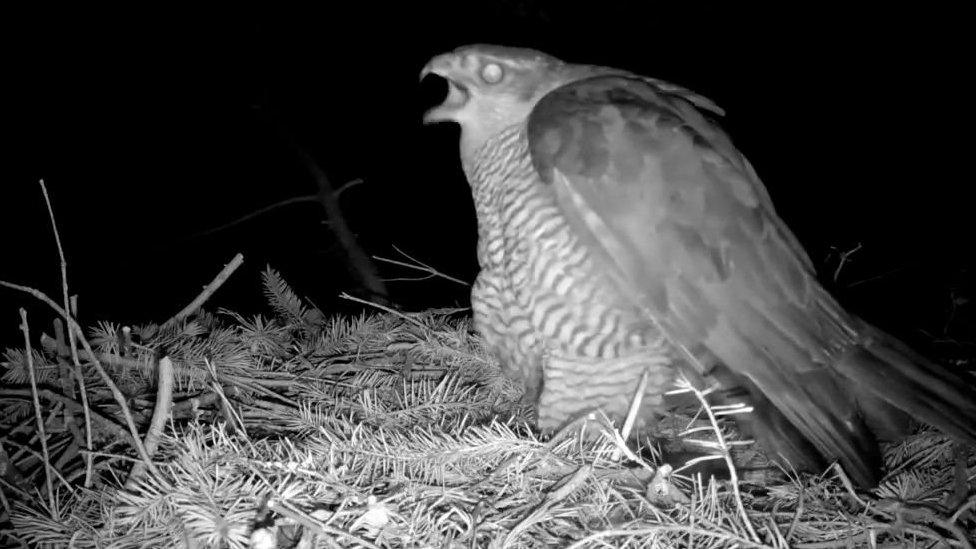Goshawks: New Forest population flourishing say experts
- Published

Goshawks have been closely monitored throughout the forest
A rare bird of prey that was once close to extinction is now "flourishing" in the New Forest, wildlife experts have said.
The first pair of goshawks returned to the forest in 2002 and 45 pairs have now been recorded by Forestry England.
The woodland raptors are nicknamed the "Phantoms of the forest" due to their elusive nature.
The organisation's Andy Page said he expected the population to expand out across Hampshire and nearby Dorset.
The birds were thought to have been extinct from the New Forest for 120 years before 2002.
Extremely agile fliers, they silently weave between trees and shrubs in pursuit of prey and are notoriously difficult to spot.

It is thought the goshawks will spread out to nesting sites beyond the New Forest
A team from Forestry England closely monitored numbers and breeding successes in the forest, spending hundreds of hours observing pairing behaviour and watching nests.
A nest camera was used to follow a pair of goshawks as they successfully raised and fledged three chicks at the top of one of the forest's tall trees.
It gave an insight into the birds' behaviour, including the male parent becoming concerned about the effect of the heat on his chicks during a spell of hot weather.
He was seen opening his wings and shading the chicks for long periods of time.
Evidence from the nest camera also confirmed that goshawk eat a wide variety of prey with a range of items brought into the nest to feed the young including squirrels, small birds, and small mammals.
Mr Page said their return was a "real conservation success story".
"As a thriving apex predator today, these birds tell us a lot about the health of this forest and the wide diversity of wildlife it supports," he said.
"The more we learn about these fascinating birds, the more we can support a range of species across our forests."

Follow BBC South on Facebook, external, Twitter, external, or Instagram, external. Send your story ideas to south.newsonline@bbc.co.uk, external.